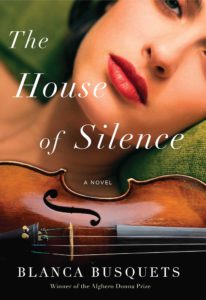
Both mysterious and romantic, Catalan writer and journalist Blanca Busquets’s The House of Silence demonstrates how music can unknowingly bind together even the most distant people. Over the course of the narrative, we eagerly learn about the lives of these four disparate characters in early 20th century Spain, whose only connection is the grave, philandering, yet kind-hearted music conductor who in some way impacts each one of their lives.
Set against the backdrop of post-War Europe, Busquets effectively highlights social conditions, linguistic barriers (and how these are crossed), as well as the transnational reality of war-torn families. Throughout the novel, careers are made, friendships are formed, and love grows, yet Busquets does not shy away from exploring the darker sides of jealousy and revenge, revealing how our bitterness does not only hurt those around us, but will eventually take a toll on ourselves. Juggling the egos of her musicians, Busquets also demonstrates the painful stakes of competition, where sometimes the line between competing for solos and competing for romantic attention is very thin.
The House of Silence presents us with the age-old premise of the butterfly effect, but it does so in such a way that leaves us captivated in the landscape of Eastern European performance halls and Spanish concertos and without ignoring the real world conditions of the time. Busquets harnesses the transformative power of music not only to compose a rich and complex tale, but also to impart upon her audience the value of our interwoven stories and to remind us how our fates are never truly experienced individually.
The House of Silence will be released on October 4th by Regan Arts.
